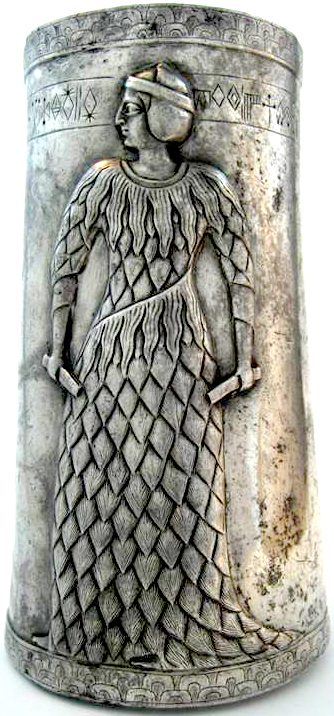We are so greatly pleased to present this interview with Dr. François Desset, who recently accomplished a remarkable scholarly feat – he deciphered an ancient and elusive writing system that used in Bronze Age Iran.
Dr. Desset is a French archaeologist, who earned his doctorate at the Sorbonne. His primary interest is Bronze Age Near Eastern Archaeology (ca. 3500-1500 BC), particularly in Iran, where he has lived for the most part since 2014, working at the University of Tehran, as well as with the French research team, Archéorient (Centre national de la recherche scientifique). He has conducted numerous excavations, especially in South-Eastern Iran, at sites pertaining to the Jiroft civilisation. Another interest of his is in Iranian writing systems.
In this latter field, along with four collaborators, Kambiz Tabibzadeh, Mathieu Kervran, Gian Pietro Basello and Gianni Marchesi, he has recently been able to decipher the long-elusive Linear Elamite writing system. At present, some 95% of the signs can be read. This is a monumental achievement, comparable to Champollion’s decipherment of Egyptian hieroglyphic writing and Ventris’ decoding of Linear B.
This interview, on behalf of the Postil, is conducted by Robert M. Kerr, who heads Inarah, the institute for the study of early Islam.
Robert Kerr (RK): How did you first get interest in Linear Elamite writing?

François Desset (FD): During my first excavation in Jiroft (South-Eastern Iran), in 2006, four tablets with a “very weird” geometric writing system were discovered. My curiosity in undeciphered ancient Iranian writing systems, such as this geometric one, linear and proto-Elamite script, was sparked. This inspired me to write a book on the subject. At this time, most colleagues preferred to keep their distance from this material as it was still undeciphered.
RK: So, a healthy curiosity of the unknown took an un-relinquishing hold of you. As we both know, even deciphered writing systems of lesser-known languages, such as the language isolate, Sumerian, still pose considerable difficulties. Undeciphered writing systems, on the other hand, tend to deter serious scholars and attract dreamers, as for example with Linear A. Your approach, much like that of Champollion and Ventris was logical and systematic, leaving no room for wild speculations.
FD: Indeed. For me the turning point was the realisation that the proto-Elamite (as the early phase of the proto-Iranian writing system) and the linear Elamite (as the late phase of the proto-Iranian writing system) must be one and the same writing system, but at two different, chronologically distinct periods. Between the two is a middle proto-Iranian script, which, however, is still not well known. Crucial for me was that I was able to gain access to a collection of inscribed silver vessels (kunanki) in London (the Mahboubian collection) from which I could make exact copies. As pointed out by Gelb many years ago, the first step in decipherment, is to establish precise copies of the texts themselves.

RK: Certainly, without autopsy, you know nothing. Drawings in my experience are often detrimental to reading such texts.
FD: Initially, in my case, when I started in 2006, I only had photographic access to one side of the objects, the silver vessels; thus, I had only one half of the inscription. It was only in 2015, after considerable efforts, when I was granted access to the artefacts themselves that I was able to start to make progress. Two years later, I was able to present my first readings.
RK: Access to the written objects is the sine qua non of any philological endeavour. However, successful decipherments, yours being no exception, pursue in their analysis a three-pronged approach: Is the language previously known? Are personal names known? Are there bilingual texts?

For the first point, the key for the later decipherment of Egyptian hieroglyphs was the conclusion by Athanasius Kircher, a Renaissance polymath at the Collegium Romanum, that Coptic must be the last phase of the Egyptian language. Although he was unable to decipher the hieroglyphs themselves, this realisation was later crucial for Champollion.
We see this too with Ventris, who concluded that the language of the Linear B tablets must be a form of Greek, and Knozorov’s decipherment of the Mayan hieroglyphs. As per your second point, personal names, the realisation that such must be contained in cartouches was essential for Champollion’s work on the Rosetta Stone. The Rosetta Stone of course is triscriptural (hieroglyphs, demotic, both forms of Egyptian writing) and Greek and bilingual (Egyptian and Greek).
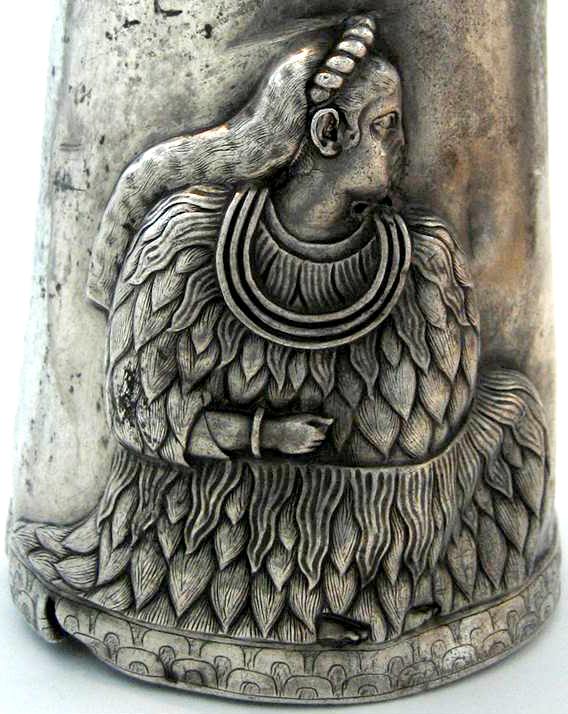
FD: With linear Elamite we do not have bilingual texts stricto sensu. We only have “partial bilingualism;” that is texts recorded in different languages and containing. e.g., the same anthroponyms, titles, etc. So, for example, those referring to the Susian king Puzur-Sušinak (2150-2100 BC), which display a cuneiform inscription recording an Akkadian text, and a Linear Elamite writing one, recording what we could prove as being an Elamite (or Hatamtite) language text. The texts themselves, although they share the same onomasticon and titles, deal however with different subjects.
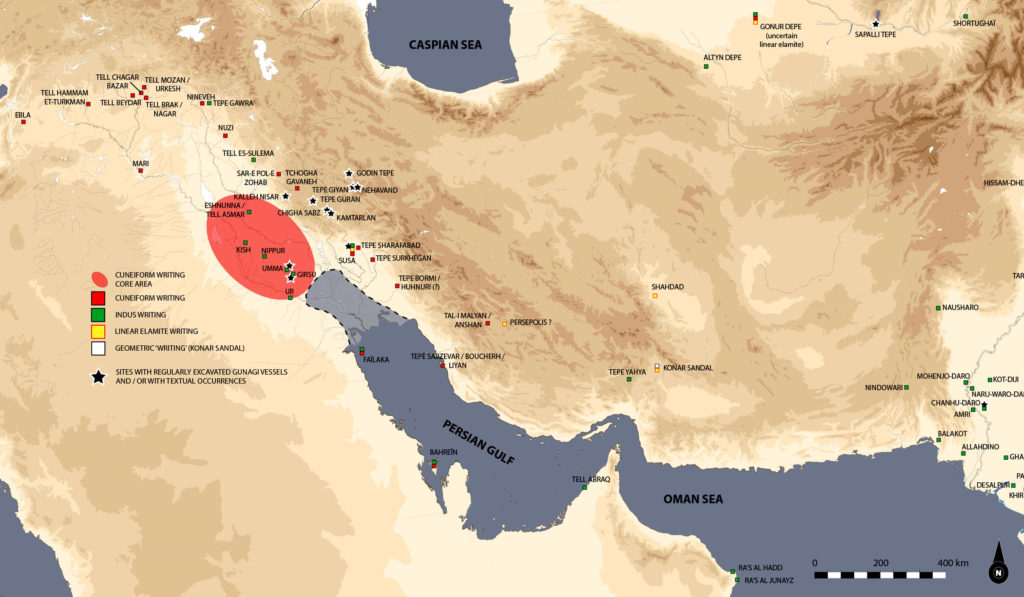
The texts themselves, although they share only the onomasticon and titles, deal however with different subjects. Then, we also have what one might term “biscriptualism;” that is, two objects with the same text (in the same language), though written in two different writing systems.
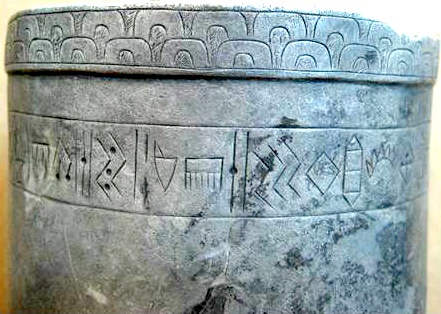
This was the jackpot – the same Elamite or Hatamtite text written on one artefact in cuneiform, and on the other in Linear Elamite. This is a classic knowledge-driven decipherment based on our capability to make connections between Cuneiform and Linear Elamite scripts inscriptions recording the same Hatamtite (or Elamite) language text.
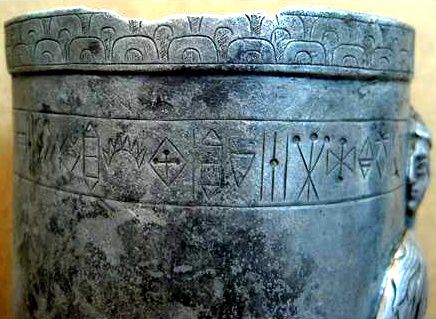
RK: An excellent point, especially in this day and age when many seek to replace knowledge with technology.
FD: Certainly. I wish in this regard to emphasise that I have been asked a lot about computers, statistical data, etc. All hogwash! Knowledge, especially cultural knowledge and of the languages used at the time, some luck, and most important perseverance were essential.
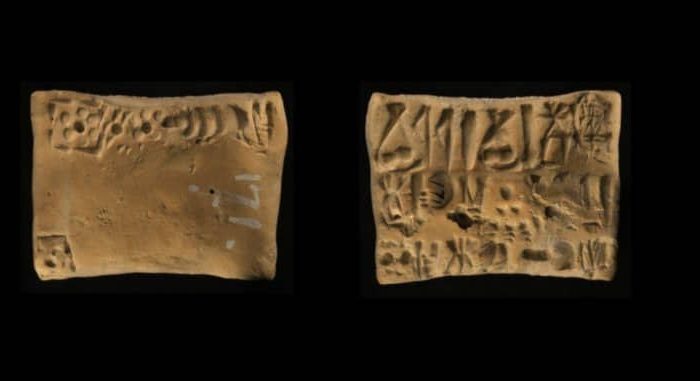
RD: Often today, computers are employed to avoid thinking, as an ersatz for genius – information nowadays often is mistakenly equated with knowledge. Technology is no substitute for ingenuity, the feat of you and your team is a true intellectual achievement. Here, with regard to the first criterium, previous knowledge of the language, you were sailing somewhat on uncharted waters.
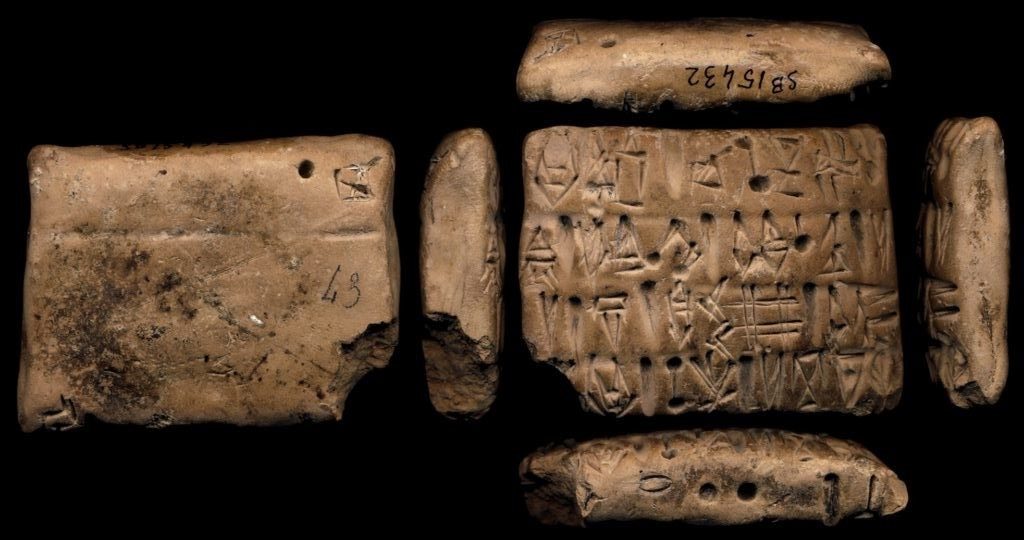
FD: Not entirely. We had Hatamtite (Elamite) proper nouns recorded in cuneiform. Without that, we would have been unable to make any significant advancements. The language though, like Sumerian, is a language isolate (i.e., has no known cognates). We know now, after decipherment, that cuneiform is rather unsuited to render the Hatamite language.
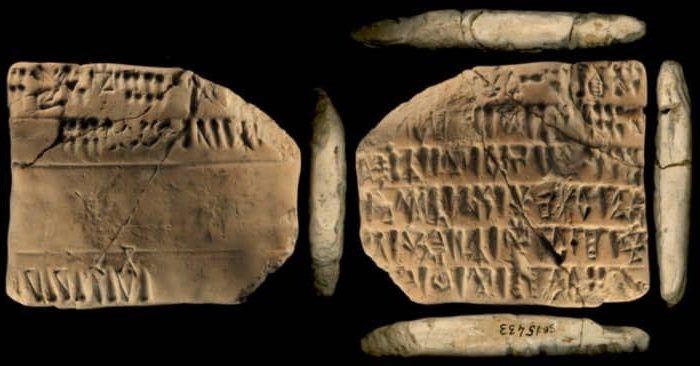
So, for example, the name of the 14th century BC king rendered in cuneiform as Untaš-Napiriša is rather to be rendered Ontaš-Napireša, because we now have a graphic rendering in Linear Elamite closer to contemporary phonetic reality, i.e., how it was pronounced. This writing system is well adapted to the morphophonology of Hatamtite, much more so than (the au fond logographic) cuneiform.

We have now also made considerable progress towards understanding the phonology of the language. I have the impression that Linear Elamite is in a way more “advanced” than cuneiform since it provides a more precise rendition of phonemes.
Curiously enough though, many scholars thought that the silver vessels bearing the inscriptions were forgeries. After their publication in 2004, nobody seemed interested in these objects. I thought I must have missed something.
RK: There was of course in the 1990s the famous “heist” of supposedly Achaemenid metalwork in New York, which turned out to be modern forgeries.
FD: We must always be careful with objects which are not unearthed in the course of official, professional excavations. Metal in the Middle East, a scarce, hence mostly imported commodity, was nearly always recycled. We usually only find such objects in graves. My suspicion is that the Mahboubian artefacts may come from graves dated around 2000-1900 BC.
RK: Looted artefacts lack archaeological context and hence are of limited scientific value. And they aid in the dissemination of forgeries. In your case, your decipherment has shown that the objects must be authentic. Could you now briefly explain to us the distribution of writing systems on the ancient Iranian plateau.
FD: I am proposing a new history of writing in the Near East. Things in this regard have now become a lot simpler. Until 2018, I thought that we had proto-Elamite, Linear-Elamite and this geometric writing system only attested in Jiroft. Then I came to the conclusion that the first two must be one and the same writing system. Their different appearance is due to chronological development. My thinking now is that in this region, “Iran” (archaeologically speaking), there was only one ancient writing system which appeared around 3000 BC. It was used, based on the names of the kings attested until about 1880 BC. These I divide roughly into three distinguishable phases.
The first phase, traditionally known as proto-Elamite, I term Early proto-Iranian writing; these appear to be mostly administrative tablets, found on eight sites, primarily in Susa during the French excavations at the end of the 19th/early 20th centuries, on the Iranian plateau. They are datable to circa 3300-3000/2900 BC. Although these texts are hitherto undeciphered, now that we have deciphered what I call Linear Elamite (Late proto-Iranian writing phase), we will be able to work backwards (as was done with cuneiform).
Then, we have the Middle proto-Iranian writing phase, about which we have only sparse information, and which probably should be dated in between, ca. 3000/2900-2300 BC.
Then comes what has been conventionally known as Linear Elamite, Late proto-Iranian writing (phase III), that which we have deciphered and is more or less datable to 2300-1880 BC. For this last stage, the present corpus is not large, with currently some 43 inscriptions, found in Southern Iran, in Susa, in Fars and in Kerman province (Shahdad and Jiroft). Thereafter, this (proto-Iranian) writing system falls into disuse around 1880 BC.
I believe that there were two reasons for this: first, in the early 2nd millennium BC, there was a large-scale urban collapse in Eastern Iran, in what is now Kerman Province; all the cities, Jiroft, Shahdād (Khabīs), etc. were abandoned – but this was not limited to the Eastern Iranian plateau; this was also, for example, when the Indus Civilisation came to an end. Second, in South-Western Iran in this period, in Susiana and Fars, Mesopotamian cuneiform was adopted by Hatamtite speakers.
RK: Often with urban collapse, writing systems, whose primary function is administrative, fall into disuse. We see this elsewhere, for example at the end of the Bronze Age in the Eastern Mediterranean. Could you now briefly walk us through your decipherment of Linear Elamite?
FD: By being able to access the artefacts in the Mahboubian collection, I was able to distinguish specific, repeated sequences of characters which were likely to be names. Of special note was a sequence of four tokens, which I thought in all likelihood must render the name of a king. The first sign, /ši/, had been previously identified in 1905 by a German scholar, Bork; the third and fourth signs were identical. Thus, I just needed to find the name of a king whose first syllable was Ši- and which ended in two identical syllables and who ruled in the early 2nd millennium BC. The names of the Elamite kings are known (e.g., from cuneiform sources). And there was only one king to whom these criteria applied, namely Šilhaha (20th century BC). This was the key. It gave me the phonetic value of two further signs, from which I could proceed.
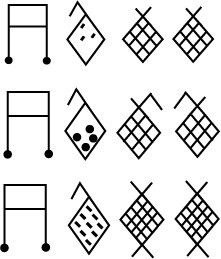
RK: I do not wish to diminish your intellectual achievement in any way, but could one say, that what aided you vis-a-vis previous scholars such as Hinz and Merigi’s brilliant and painstaking work, was that you had a larger corpus?
FD: Indeed, access to the Mahboubian collection was essential; in this regard I was quite fortunate.
RK: It was indeed your perseverance, gaining access to the collection while others showed no interest. This is an essential trait, especially for epigraphists.
FD: Yes, especially since the writing system itself is not as complicated as for example cuneiform.
RK: Yes, and with regard to writing systems, we must never forget that orthography and phonology are two related though quite distinct manifestations of language.
FD: Of course, language sound is not visual language/graphemic rendering. So, for example, there are logographic writing systems, such as Chinese characters (Hànzì), which do not record sound.
RK: And, as for example speakers of English and/or French know, how you write something is not how it is pronounced. These are two related, yet entirely different phenomena. We see that the advantage of the alphabet is that we can graphically produce words with a limited character-set, which then are read “hieroglyphically;” we recognise the word shape. Children and language learners have difficulties until they are able to master word shapes (cf., with smartphones, Chinese is written phonetically using the Latin alphabet, whereupon the user selects the correct character).
FD: Yes, speaking and writing serve two different goals.
RK: Moving on then, can you provide us with a brief overview of the Linear Elamite texts that you have deciphered.
FD: At present, we have a corpus of some 43 texts, which is not really a lot. We can roughly divide these into seven different corpora, periodically and geographically speaking. The first, the best preserved, longest, and the most important genre is votive or dedicatory royal inscriptions; those of Puzur-Sušinak (cf. supra) from Susa (2150-2100 BC). A second corpus in this genre is represented by the somewhat more recent texts on silver vessels of the late Simaški/early Sukkalmah dynasty (2000-1880 BC), by Eparti II and his probable son, Šilhaha (cf. supra).
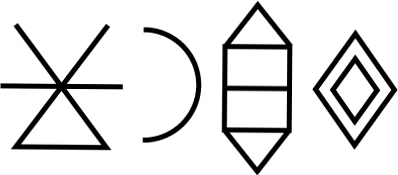
On the silver vessels we can also glean two important conjugated verbs, “I made” and “I gave;” e.g.: I am … the King of Hatamti, I made … and I gave (scil. presented this object to deity x). We only have one text containing historiographical data, a campaign by Puzur-Insušinak previously known from cuneiform sources. We do, however, have important data pertaining to anthroponyms and the names of their gods which were previously unknown. Also, because as elsewhere in the ancient world, names had an apparent meaning, i.e., they are grammatically analysable and hence supplement our knowledge of the language. Sometimes it is hard to distinguish between a simple sentence and a “sentence name.”

Now that we can read some 95% of the Linear Elamite signs, the challenge with which we are faced is the translation – as mentioned, distinguishing names from sentences, but also due to our limited knowledge of Hatamtite/Elamite grammar and lexicon. The latter especially, since we can now read the texts, we are continually encountering previously unknown lexemes and grammatical forms.
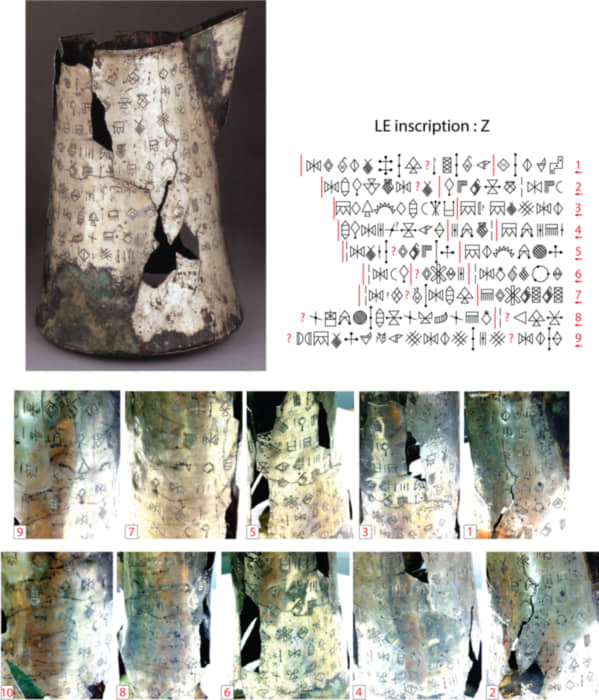
RK: These are the problems which one faces when reading a linguistic isolate. As we mentioned, Champollion had Coptic to work with, Ventris, Greek. And there are very few bilingual texts involving a Hatamtite/Elamite version, including most notably the much more recent royal Achaemenid trilingual texts (Old Persian, Akkadian and Hatamtite/Elamite). I read many years ago the works of David McAlpin, who proposed a relationship with Dravidian languages. This has not been widely accepted, and hard to prove due to the chronological distance between the recording of the two posited groups.
FD: Indeed, this is a very unlikely proposition. To the best of our knowledge, it would seem that Hatamtite/Elamite remains, for now, a language isolate. Of course, no language can be a real isolate; it is just due to the data available to us. A lot changes over the course of three millennia. I choose, however, to leave this for what it is. I am not a historical linguist.
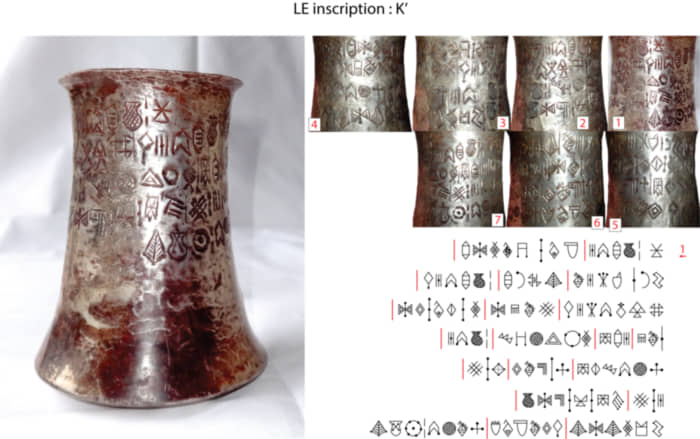
It is however possible that Hatamtite/Elamite was spoken up to the tenth/eleventh century AD. Indeed, Persian geographers, writing in Arabic, make mention of a language (Khuzi) spoken in Khuzestan, which would seem to have been a late form of Elamite or preferably Hatamtite.

Here I wish to make a brief note on the terminology. I am a fervent advocate of using “Hatamtite” as a glossonym, based on the auto-toponym Hatamti found in Linear Elamite texts themselves. “Elam” is a Mesopotamian allo-toponym which can roughly be translated as “Eastern Highlands.” Hatamti was probably the most important designation for the political structure of the Iranian Plateau during the third millennium BC.
RK: Your point is well taken. When the Louvre has its displays rewritten accordingly you will know that you have won. Let us return to your point on proto-Iranian writing, that this is one system with three (chronologically distinct) manifestations (One might compare the decipherment of the Shang Dynasty ‘oracle bones’, whose writing system represents the first attested stage of Hànzì). Indeed how many independent writing systems might one expect in one culturally homogenous region?
FD: The idea is not new. In the early twentieth century, it was widely thought that they were related. Thus, I am rather promoting classical ideas. It was only in the 1970s/1980s that what I call proto-Iranian writing Early, Middle and Late phases were viewed as distinct and independent writing systems. Although a general scientific consensus remains in this regard, I believe that I have good reasons to dispute this. So, for example, even a superficial glance at the shapes of the tokens themselves strongly suggests that the Early (Proto-Elamite) and Late (Linear Elamite) phases (the Middle phase is still poorly documented) are one and the same writing system.

I have now started to work on the most ancient texts, the Early phase, using the phonetic values of tokens from the Late phase or Linear Elamite. It is still early days, but I can unequivocally state that there is a continuity.
RK: I do believe that you are on the right track and look forward to the completion of this work very much. Let us now turn to the implications of your decipherment and your thoughts about the origins of writing in the Ancient Near East, especially your suggestion that the earliest cuneiform writing and Early proto-Iranian (or Proto-Elamite) writing are contemporary, i.e., sister scripts. The communis opinio states that cuneiform is the mother of all writing systems. You posit a chronological and a logical argument.
FD: Yes, I have published extensively on this. Firstly, in my 2012 monograph, usually ignored by the academic world, and again in 2016, which received slightly more interest. This discussion is however completely unrelated to the decipherment of Linear Elamite.
However, I want to use the attention which the decipherment has attracted to promote my ideas on the origins of writing. Simply put, Carbon14 datings and the stratigraphy of the respective texts show that both Proto-Cuneiform in Mesopotamia and Proto-Elamite in Iran are contemporary. Conventional wisdom dates the Uruk (proto-cuneiform) texts to 3300-3200 BC. If we accept such, we must note that proto-Elamite (or Early Proto-Iranian) texts found in the1970s in the Iranian site of Tal-e Malyan were C14 dated to precisely the same period. From the point of view of pure chronology, based on the current data, both are consequently contemporary..

As for my second argument, logic, let me note that if proto-Elamite (or Early Proto-Iranian) was a daughter script of cuneiform, then it should manifest numerous shared elements or borrowings. However, both differ for roughly 95% of the time. There is only 5% which is shared, especially, the numeral signs and systems employed and several logograms or sign-objects. Both of these, however, can also be found in the “numerical tablets” which are somewhat older, ca. 3500-3000 BC and are attested from Syria to Iran. It is clear that both proto-Elamite/ Early Proto-Iranian writing and proto-cuneiform share a common ancestor, namely, these numerical tablets. Thus, they are sister scripts.
Although I have been criticised for this thesis, my evidence is solid. I would of course be willing to reconsider should an excavation in the South of Iraq produce proto-cuneiform tablets which can be unequivocally dated to circa 3500 BC or earlier. Mine is the most parsimonious explanation with the data currently available.
RK: One must not forget that these “numerical tablets” do not render a language. They display logographs which are language independent and numerals.
FD: earliest writing systems were not very related to (a specific) language. We also see that they were only employed in specific domains, mainly accounting. This can be done without rendering specific linguistic information.
RK: Furthermore, if one accepts the theory of Schmandt-Besserat, that writing emerged from the use of symbolic tokens, “tags,” clay envelopes which only then became tablets, then the origins of writing are logographic. The latter, especially in light of their distribution, both chronological and geographical, could well be the precursor to both writing systems.
FD: With regard to her theories, we must be cautious. So, there is the discussion about the simple tokens dating back to the sixth and seventh millennia BC, which I do not view as the precursors to writing. The complex tokens on the other hand, which date to the fourth millennium BC, along with the clay envelopes, may well be the precursor to writing stricto sensu.
RK: The envelopes are convincing because they were used into the early second millennium BC. Thus, the evidence for a common ancestor for both proto-Iranian and cuneiform Mesopotamian writing is very credible.
FD: When I refer to the common ancestor, I mean the “numerical tablets” and not the complex tokens. The former have been found throughout the Middle East, from Syria to Iran, and date to the mid fourth millennium BC. It should also be noted that these tablets did not immediately fall into disuse after the invention of writing, and continued to be used for accounting and administration alongside the writing systems.
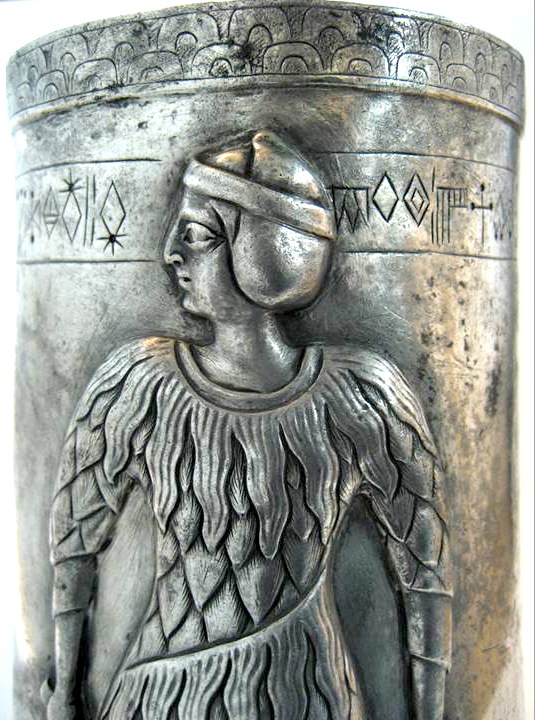
RK: (Complex) Bureaucracies tend by their nature to be conservative, and these served the required purpose well. Can we turn now to the nature of the proto-Iranian writing system itself?
FD: Here we must proceed with caution. We must not conflate the Early proto-Iranian phase (proto-Elamite; late fourth millennium BC) with the Late proto-Iranian phase (Linear Elamite; late third/early second millennium BC). Let us discuss the latter first. Until 2018 – put yourself in my position at that time – what other writing systems were present? Mesopotamia, Egypt and Indus. Let us ignore the latter, it is still undeciphered.
Focusing on Mesopotamian cuneiform and Egyptian hieroglyphs, we see that they are mixed writing systems, employing both logograms and phonograms. Initially, I was convinced that this would also apply to Linear Elamite, and tried to identify these in the texts. I slowly however came to the realisation, confirmed, now that we can read some 95% of the graphemes, that this writing system was purely phonetic, using both syllabic and graphemes rendering one phoneme, without any logograms – it is an alpha-syllabary. It is thus the most ancient, purely phonetic writing system known to us. This is spectacular!
I believe that the Hatamtites were strongly attached to phonetic writing. So, for example, when they later abandoned proto-Iranian writing in favour of Mesopotamian cuneiform (cf., supra), they initially rejected the logograms and the logographic values of the characters. This has been known for a long time. Previously though, many scholars claimed that this was due to the Hatamites poor grasp of the essentials of cuneiform writing and its logograms; they were only able to use it at its basic, phonetic, level. We now know that this is not the case. The Hatamtites had a long tradition of phonetic writing, and kept this when they adopted another, scil. cuneiform.
They wrote cuneiform just as they wrote Linear Elamite. Later in the second millennium BC, logograms began to re-appear – here we see the influence of Mesopotamian scribal habits.
Late Proto-Iranian or Linear Elamite works on the principle of a phonetic grid with vocalic and consonantal values. It is perfectly logical. I could even use it to write French. Due to this, it works with quite a limited number of signs, especially when compared to cuneiform and hieroglyphs. Excluding some variants, we have about eighty characters. It is my impression, at present, that the Early Phase had not yet reached this degree of abstract rationalisation.
I am now trying to use our knowledge of the Later Phase to read the Early Phase texts, starting with the proper nouns, i.e., anthroponyms and theonyms. In these texts, we have longish sequences of characters, which do not seem to render numeric data, and which I suspect render onomastic information, which are often theophoric sentence names that undergo little innovation. My impression is that in the Early Phase (Proto-Elamite tablets), we have a hybrid system employed to record proper nouns, both logograms and phonograms.
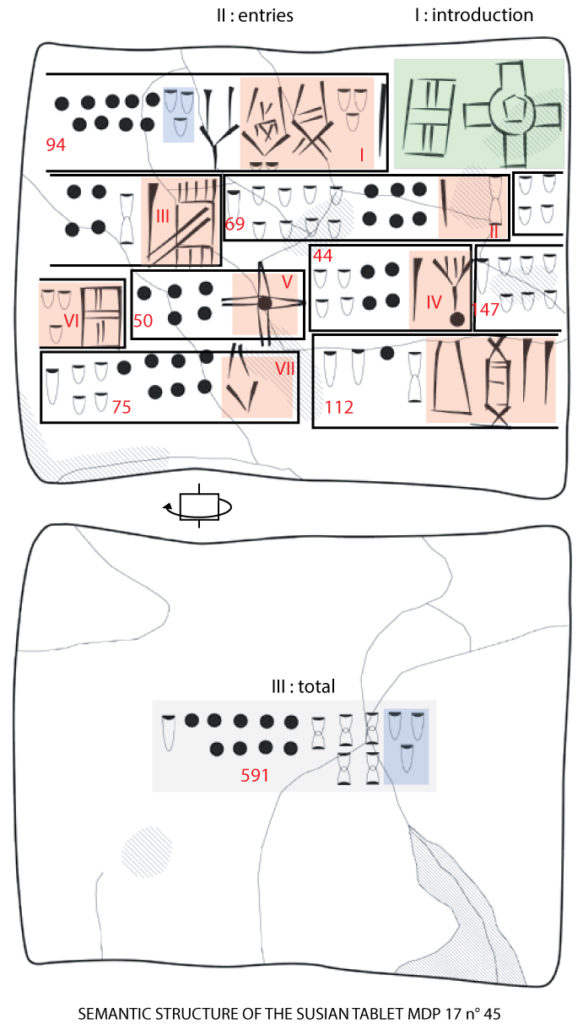
My aim is to read the syllabically written parts of the personal names, and then try to deduce the value of the logograms. All in all, the corpus of tablets belonging to the Early Proto-Iranian Phase amounts to about 1700, mainly found in Susa and now in the Louvre – but also throughout the Iranian Plateau, with a more wide-spread distribution than in the Latest Phase. We have a good knowledge of the Susian onomasticon from the late 3rd millennium BC (i.e., written in cuneiform).
Using both the Late Proto-Iranian/Linear Elamite deciphered signs and the onomastic data available for the inhabitants of Susa in the cuneiform sources could lead to some progress in understanding the names recorded in the Proto-Elamite tablets. This is on the assumption that naming practices did not change dramatically during the third millennium BC. Of this though we can be fairly certain; so, for example, there is little change between ca 2300 and 1500 BC.
RK: This is certainly a good starting point. Just for the sake of clarity, in your Early proto-Iranian Phase, we find no cuneiform influence. The fact that it is a mixed logographic-syllabic system is what one would expect in the initial stage; this cannot be considered external influence. However, if the Early proto-Iranian writing was a daughter script of cuneiform, one would expect borrowings, since writing systems cannot be entirely separated from the language(s) which they rendered. So, the use of Sumerian logograms in Akkadian, and the use of Akkadograms in Hittite, etc. The borrowing of writing systems presupposes bilingualism in both the donor language and the target language. Cf., the historical influence of Latin in languages that use the Latin alphabet. When there is no bilingualism, it is the idea of writing that is borrowed, not the writing system itself (cf., e.g., Sequoyah’s Cherokee syllabary).
FD: Yes, as we discussed previously, the commonalities are largely restricted to the numerical signs and systems employed. Both Mesopotamian cuneiform and proto-Iranian inherited these from a common predecessor. The absence of Mesopotamian cuneiform influences supports both being contemporary and does away with the notion of cuneiform primacy, for which there is no evidence.
RK: I think that you have made a strong argument that proto-Iranian writing and Mesopotamian cuneiform are sister writing systems with a common ancestor, the numerical tablets. And again, my congratulations on your brilliant achievement in deciphering Linear Elamite – we eagerly await the publication of your findings. We also look forward to the progress of you and your team on proto-Elamite. Many thanks for your time.
